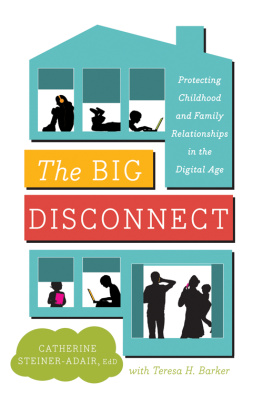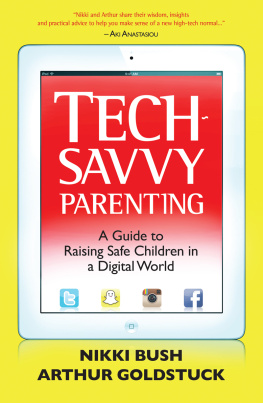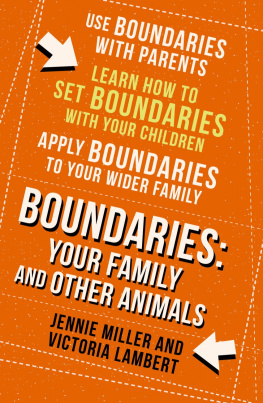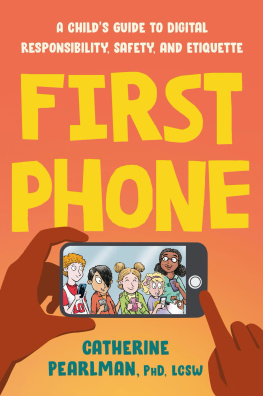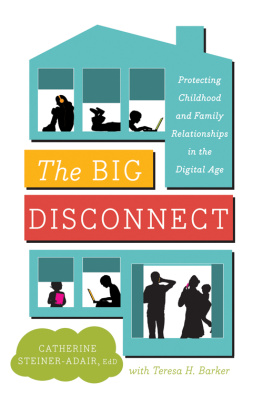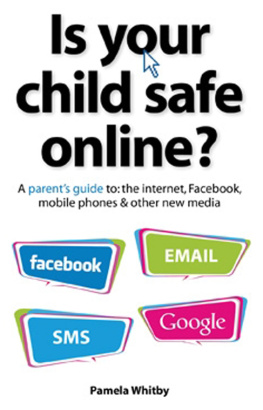D R . C ATHERINE S TEINER -A DAIR is an internationally recognized clinical psychologist, consultant, and educator. She divides her time working as a therapist with children, couples, and families, and as a school consultant, researcher, and speaker. Her current work focuses on strengthening students social and emotional resilience to unhealthy cultural values, helping schools develop curricula and programs to strengthen students confidence and competence as emerging leaders, and nourishing healthy relationships in the age of technology. She is a clinical instructor in the Department of Psychiatry at Harvard Medical School, and an associate psychologist at McLean Hospital. She speaks to numerous audiences, including educators, health professionals, PTAs, religious groups, and corporate and nonprofit organizations. Dr. Steiner-Adair lives in Chestnut Hill, Massachusetts, with her husband, Fred Adair, a leadership consultant. They have a son and a daughter, both young adults, with whom they happily text, talk, and connect.
Visit her web site at www.catherinesteineradair.com.
T ERESA H . B ARKER is a journalist, mother of three digital natives, and book cowriter whose previous collaborations include Raising Cain: Protecting the Emotional Life of Boys , The Pressured Child: Helping Your Child Find Success in School and Life , and Girls Will Be Girls: Raising Confident, Courageous Daughters . Barker and her husband live in Portland, Oregon.
Australia
HarperCollins Publishers (Australia) Pty. Ltd.
Level 13, 201 Elizabeth Street
Sydney, NSW 2000, Australia
http://www.harpercollins.com.au
Canada
HarperCollins Canada
2 Bloor Street East - 20th Floor
Toronto, ON, M4W, 1A8, Canada
http://www.harpercollins.ca
New Zealand
HarperCollins Publishers (New Zealand) Limited
P.O. Box 1
Auckland, New Zealand
http://www.harpercollins.co.nz
United Kingdom
HarperCollins Publishers Ltd.
77-85 Fulham Palace Road
London, W6 8JB, UK
http://www.harpercollins.co.uk
United States
HarperCollins Publishers Inc.
10 East 53rd Street
New York, NY 10022
http://www.harpercollins.com
This book is about connections and how we establish and maintain the kinds of relationships that will help us all live up to our potential in the digital age. The project has been for me its own case study in the alchemy of chance meetings; connecting with teachers, parents, and students all around the country; reconnecting with old friends and colleagues; making new online friends; and discovering new technological applications that have transformed the process of research and writing.
It began with a fortuitous meeting at HarperCollins, in which Lisa Sharkey invited me to have a conversation about writing a book, and asked Gail Winston, executive editor, to join us. From the moment I met Gail, I was struck by her integrity and acuity. Since then, I have come to cherish her warmth, humor, and wisdom. Through Gail I connected with my agent, Kim Witherspoon, whose tenacity and belief in the book have been unwavering. At each stage in the process of writing this book, these two extraordinary women have been my polestars, keeping me balanced, guiding me brilliantly through this project.
At HarperCollins, I am also very grateful to Maya Ziv, editor, for her meticulous attention to detail during every stage of this process, and Robin Bilardello for creating the perfect book jacket. I hope that everyone judges the book by your brilliant cover! I thank Stephen Wagley for his diligent work as copy editor, and at InkWell Management I thank William Callahan for keeping everyone connected.
I will be forever indebted to my friend, fellow psychologist and prolific writer Michael Thompson, who helped in so many ways, especially in connecting me to Teresa Barker, who became my invaluable partner in this process. I could not imagine a more dedicated, intelligent, and delightful person to work with! I always looked forward to going to work on our smartphones, headsets, Evernote, and joinme.com with such a calm, upbeat, meticulous, and utterly professional colleague. My collaboration with Teresa, whom I have yet to meet IRL, is a glorious example of how technology can facilitate thrilling working relationships between two people who sit down to work together thousands of miles apart.
For her part, Teresa extends thanks to her familyhusband, Steve Weiner; son, Aaron, and daughter-in-law, Lauren; daughters, Rachel and Rebecca; beloved mentor and mother-in-law, Dolly Joern; sister (and schoolteacher), Holly; and parents, George and Maxine, for their invaluable contributionsand to soul sisters Sue, Margaret, Kathy, Leslie, and the Elizabeths, whose friendships, begun the old-fashioned way, have flourished across years and screens. And to Michael, who e-mailed one December day to introduce a friend.
The research and networking for this book took me into more than thirty schools, also thousands of miles apart. Most were independent schools; public schools welcomed us, too. There, and in focus groups coast to coast, I interviewed more than 1,000 children ages four to eighteen, more than 500 parents, and more than 500 teachers, representing a diverse range of backgrounds. The one thing they all had in common was an eagerness to share from their own discovery, delight, and difficulty with the impact of technology on their lives.
I was able to do much of the research for this book thanks to my long-standing consulting work and close collegial relationships with many heads of schools, principals, faculty, parents, and students. Educators understand and hold dear the concept of the teachable moment: that growing up is full of missteps, and that an essential pathway to learning lifes big lessons is to learn from our mistakes. This is a book full of stories about really good kids making big and little mistakes. Its about parents doing the best they can and learning along with their children. Its about school principals and teachers discovering what it means to educate children in the age of technology. I am immeasurably grateful to each of you for your trust in allowing me to come into your schools to interview students, teachers, and parents. I wish I could name each of you who have been so helpful in this way, but of course to protect your privacy, I cannot.
Thanks to all the children, parents, teachers, school counselors, and therapists I have known over many years who, upon hearing about this project, volunteered to be part of it. I had several confidential conversations with college students and other young adults, as well as grandparents, to include their perspectives. You all know who you are, and I thank each and every one of you. This is a topic close to all of our hearts, and I was consistently moved by the willingness of all those involved to tell me their storiesthe voices in this book range from age two to eighty-nine.
Except for experts interviewed, all the names mentioned in this book have been changed to ensure privacy. Identifying details have also been changed for privacy, and many stories are composite stories, when several people shared similar information. I have chosen not to list the thirty schools that participated in this project in order to counter the temptation by anyone to guess where this or that happened, and to underscore that any story in this book could have happened in any number of places (indeed, many did happen in more than one school, one community, or one life!). We are all equally vulnerable, and rather than point fingers, lets support each other and learn from one another.
In addition to interviews conducted confidentially, I would like to thank the following experts who generously contributed to this book through personal interviews: Craig Anderson, Mark Bertin, Ellen Birnbaum, Tina Payne Bryson, Dimitri Christakis, Gene Cohen, JoAnn Deak, Ned Hallowell, Mimi Ito, Jackson Katz, Mike Langlois, Madeleine Levine, Liz Perle, Denise Pope, Harvey L. Rich, Michael Rich, Kelly Schryver, Nancy Schulman, Robin Shapiro, Daniel Siegel, Lydia Soifer, Michael Thompson, Yalda Uhls, Donna Wick, and Maryanne Wolf. In their various and different ways, these professionals are all deeply committed to protecting childhood and family relationships, and I was honored by their willingness to contribute to the book.
Next page
